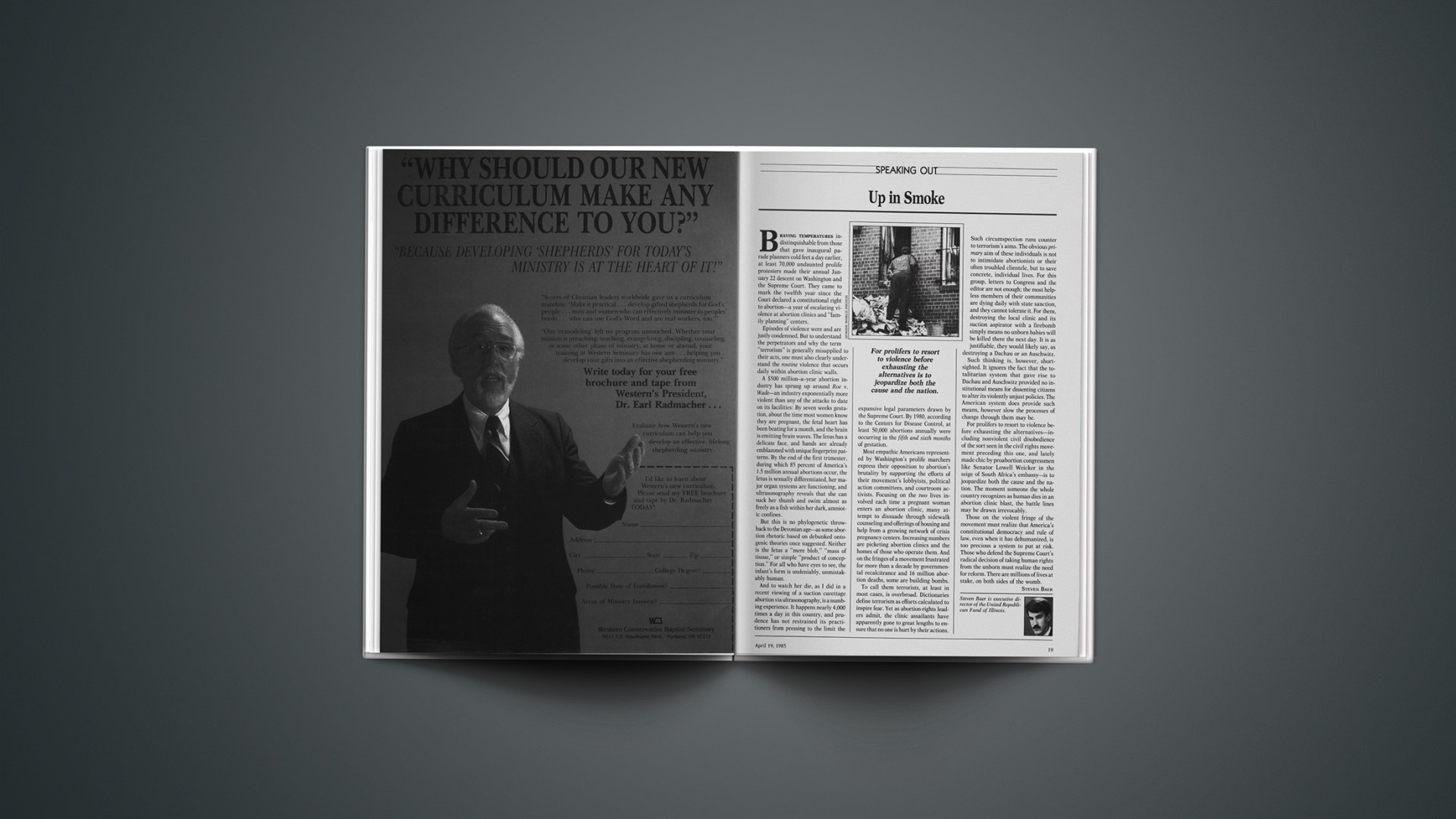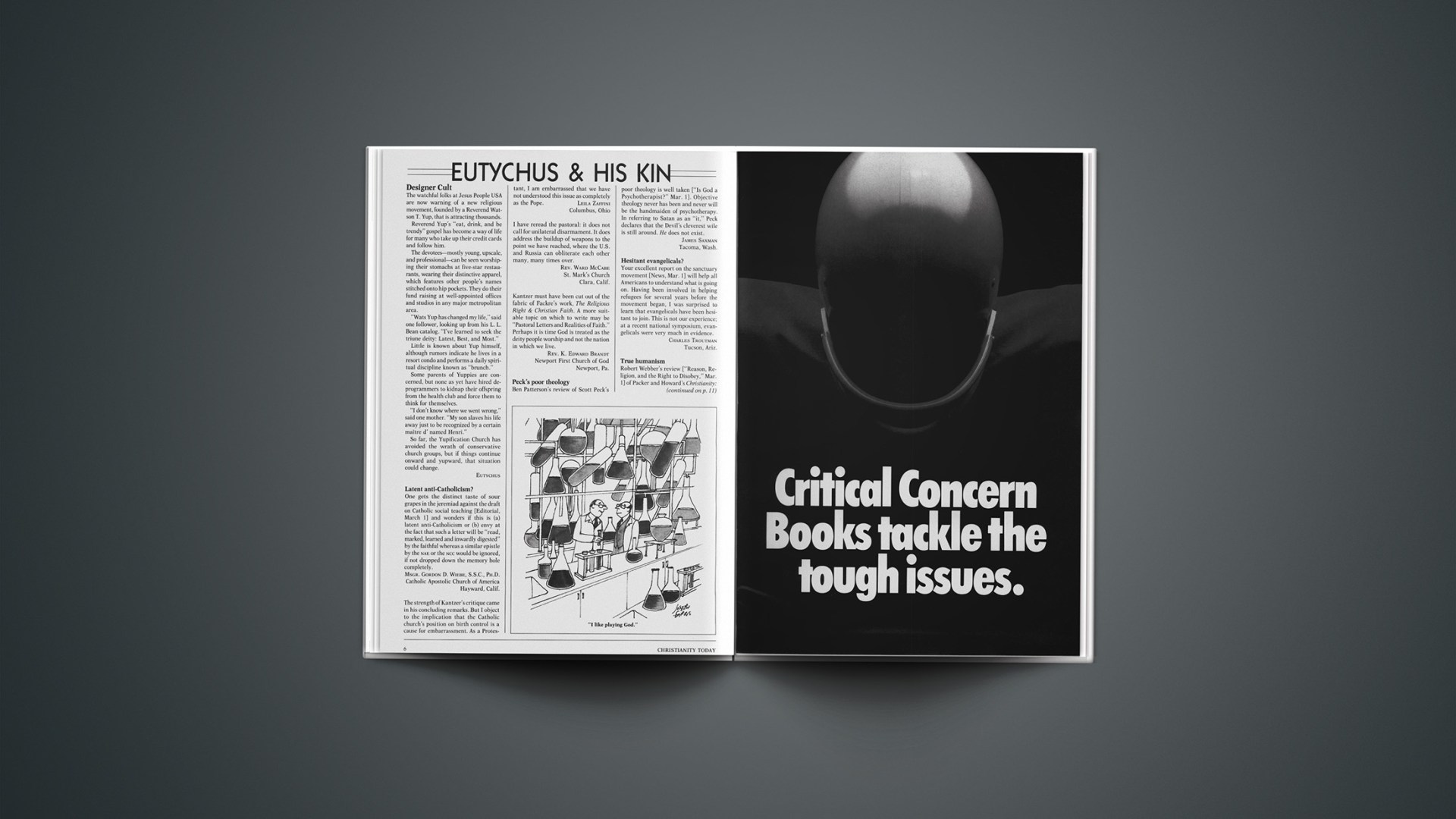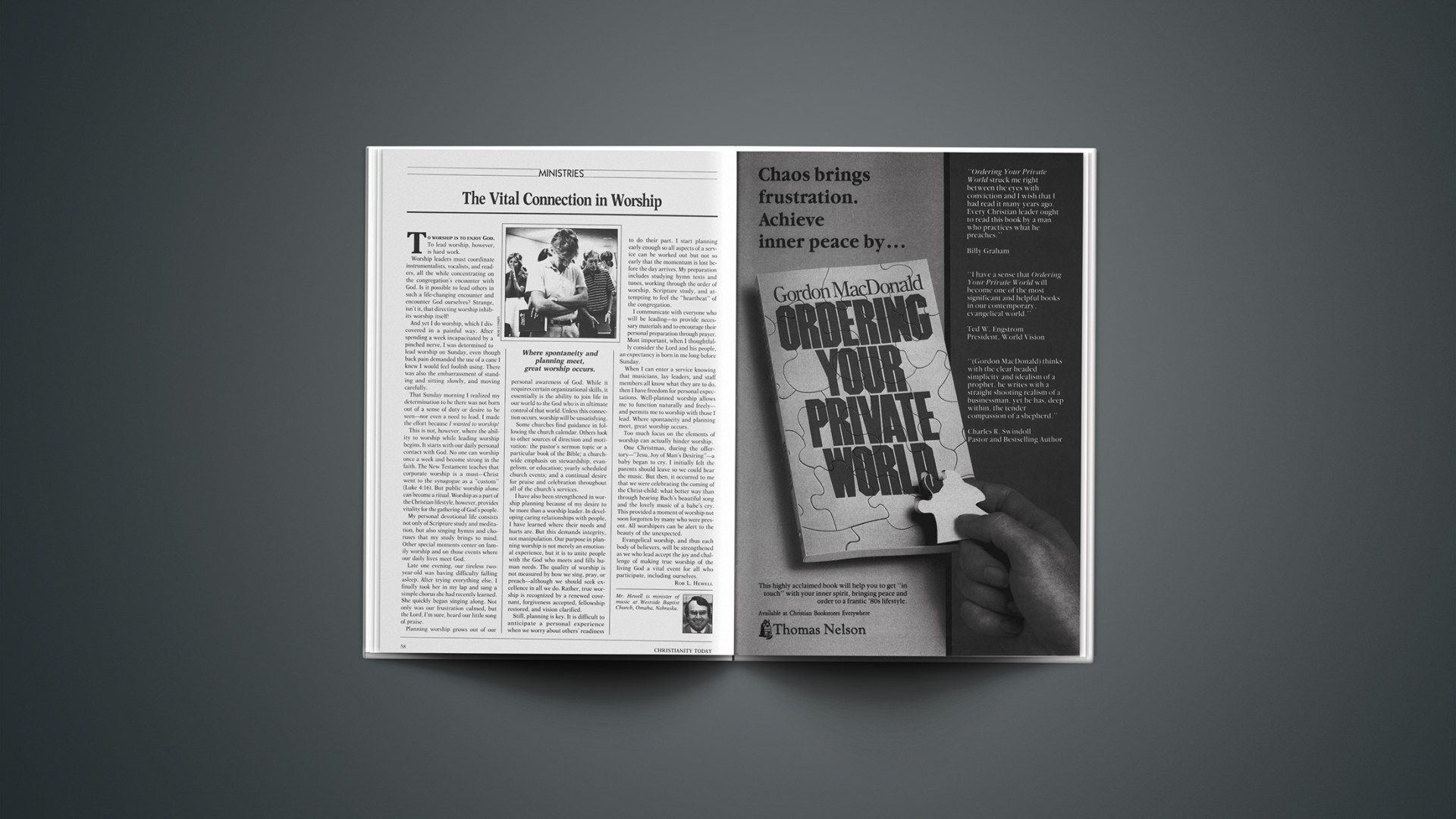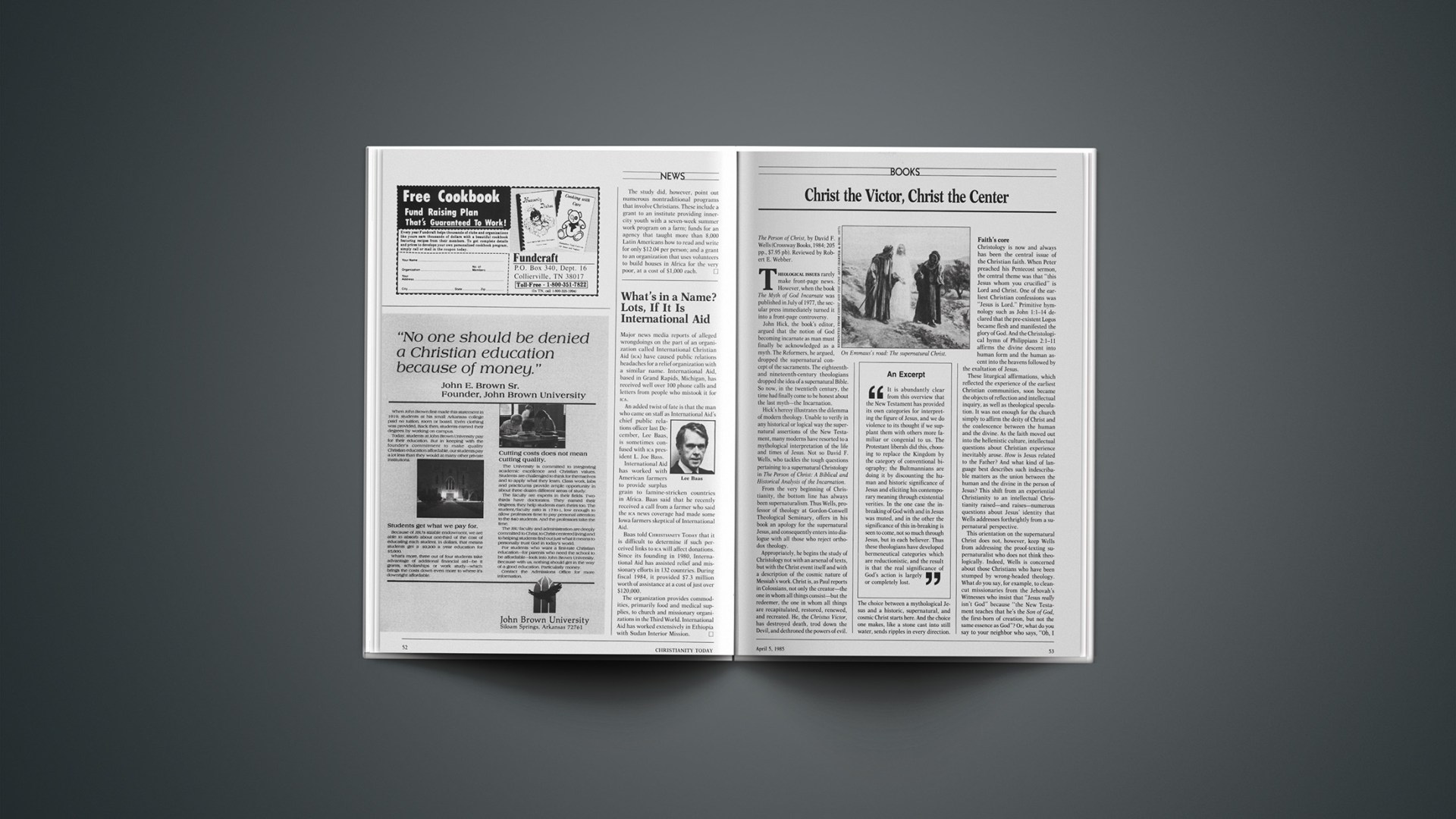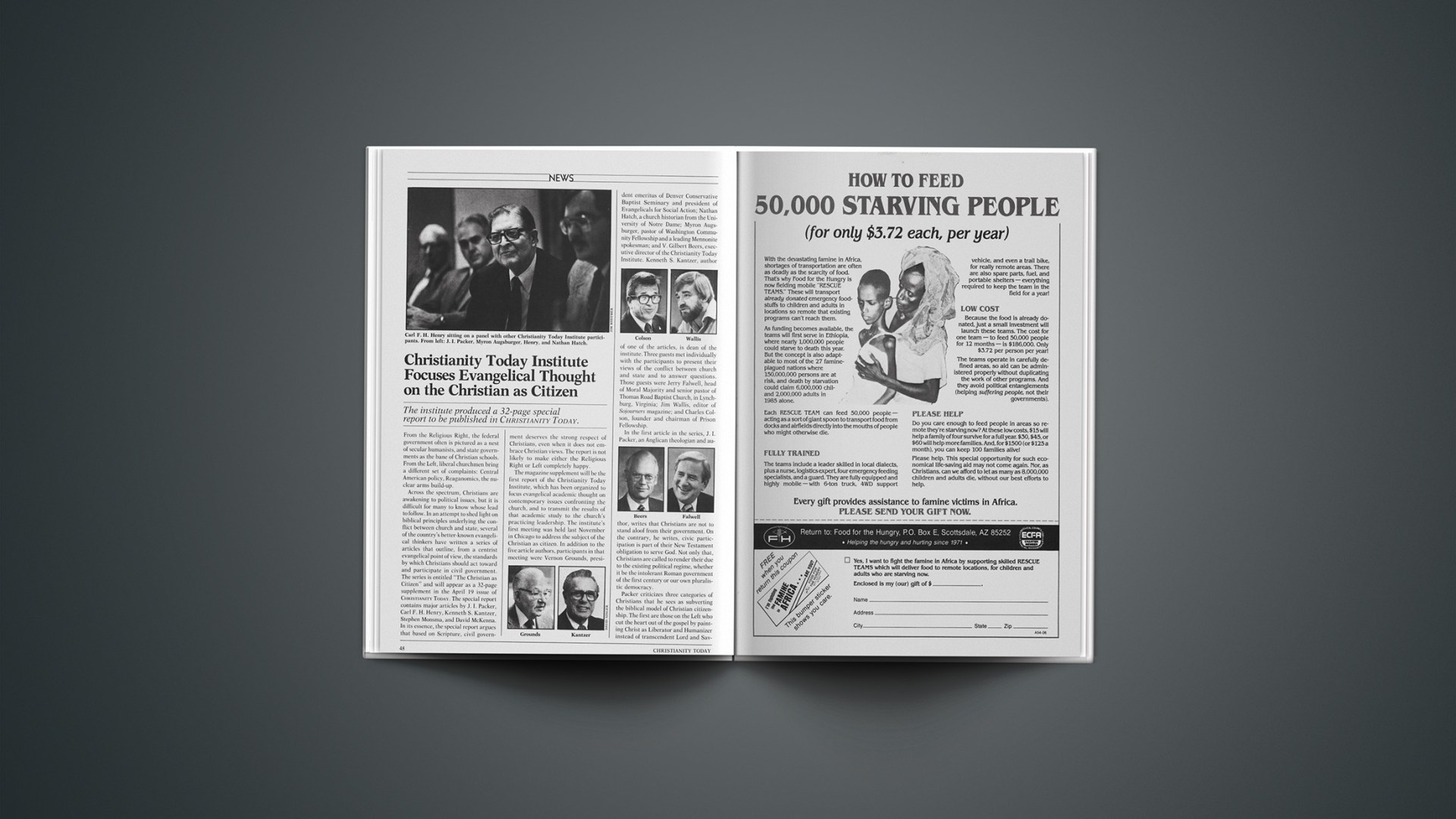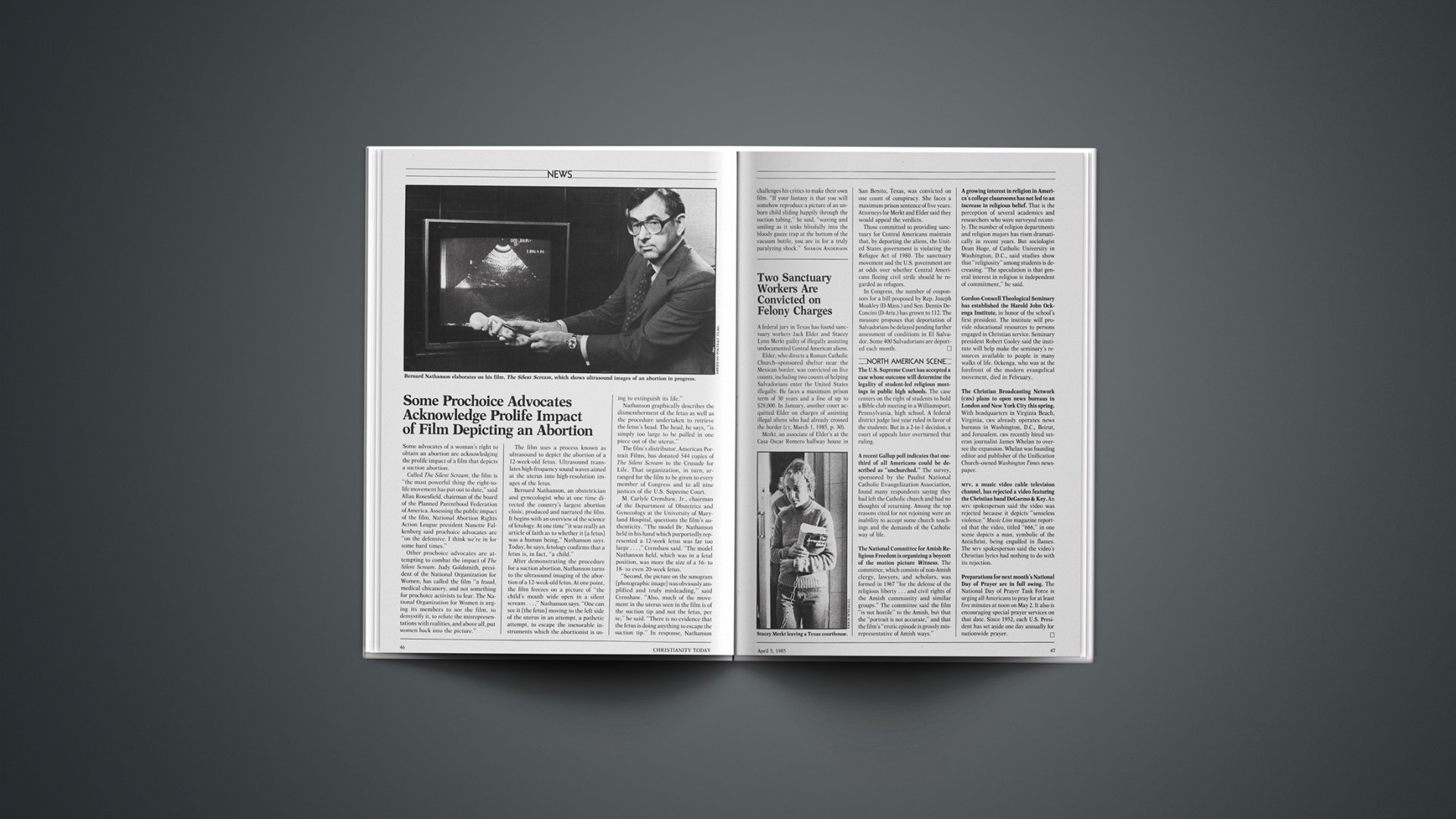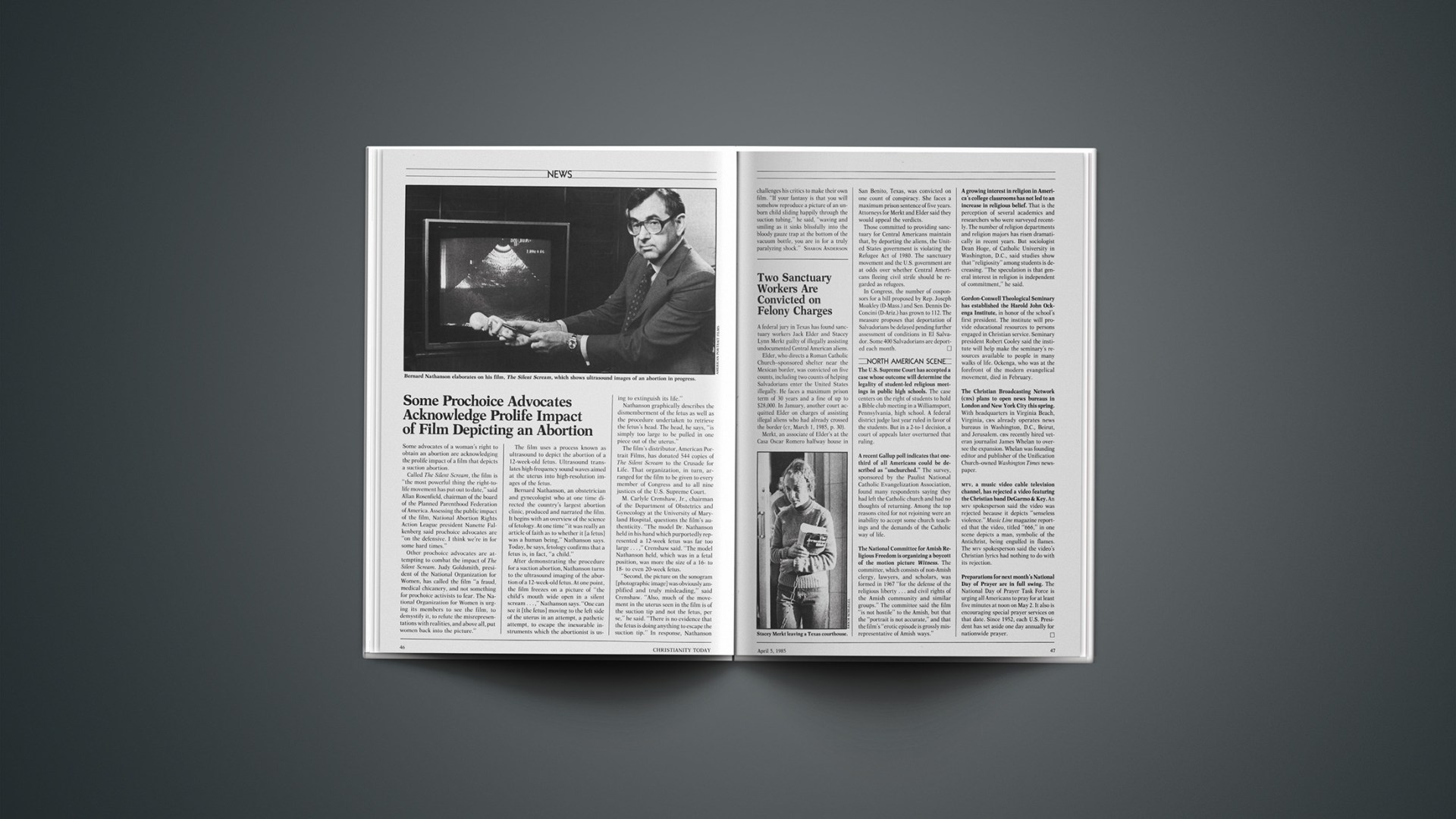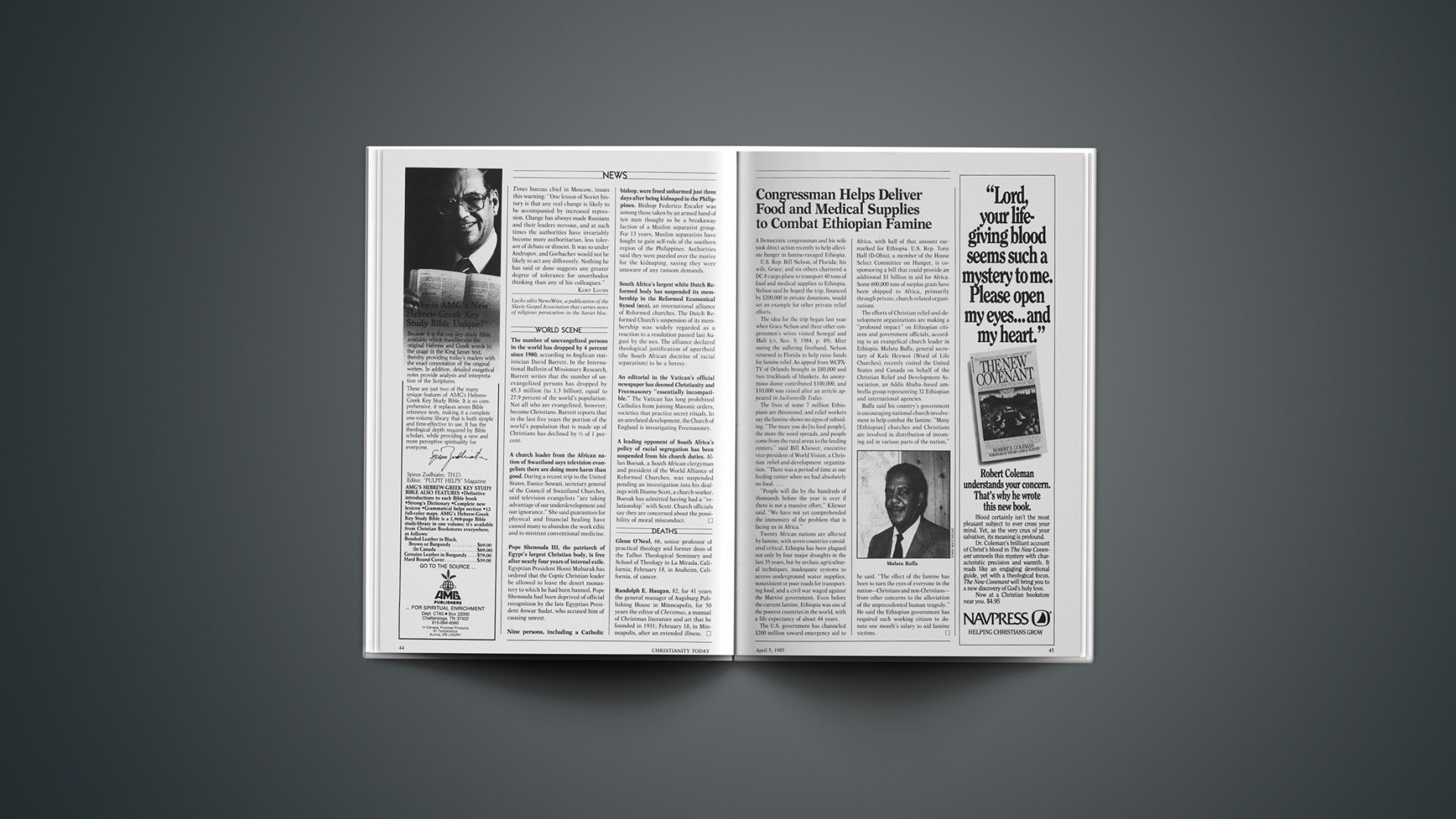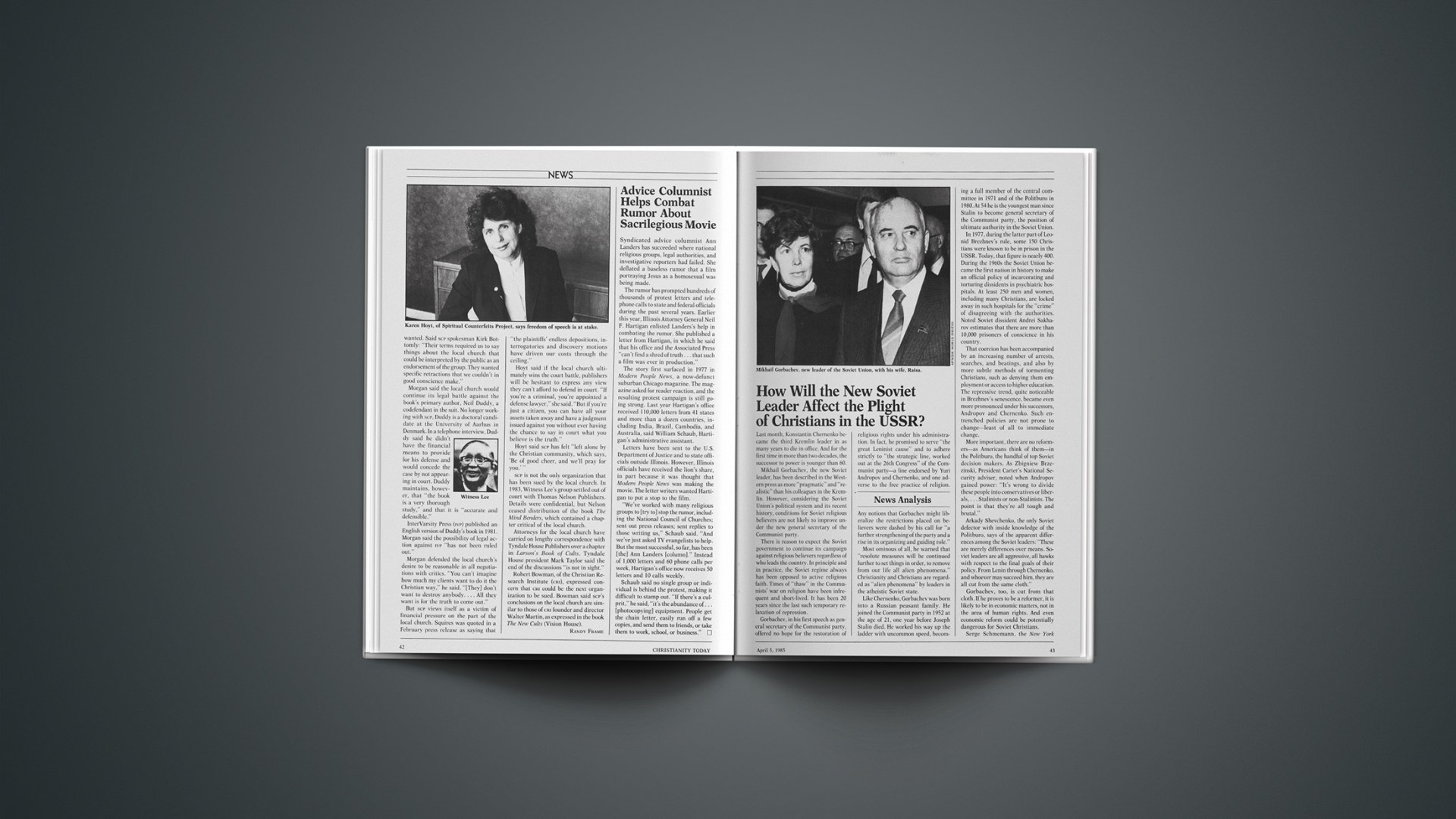Braving temperatures indistinquishable from those that gave inaugural parade planners cold feet a day earlier, at least 70,000 undaunted prolife protesters made their annual January 22 descent on Washington and the Supreme Court. They came to mark the twelfth year since the Court declared a constitutional right to abortion—a year of escalating violence at abortion clinics and “family planning” centers.
Episodes of violence were and are justly condemned. But to understand the perpetrators and why the term “terrorism” is generally misapplied to their acts, one must also clearly understand the routine violence that occurs daily within abortion clinic walls.
A $500 million-a-year abortion industry has sprung up around Roe v. Wade—an industry exponentially more violent than any of the attacks to date on its facilities: By seven weeks gestation, about the time most women know they are pregnant, the fetal heart has been beating for a month, and the brain is emitting brain waves. The fetus has a delicate face, and hands are already emblazoned with unique fingerprint patterns. By the end of the first trimester, during which 85 percent of America’s 1.5 million annual abortions occur, the fetus is sexually differentiated, her major organ systems are functioning, and ultrasonography reveals that she can suck her thumb and swim almost as freely as a fish within her dark, amniotic confines.
But this is no phylogenetic throwback to the Devonian age—as some abortion rhetoric based on debunked ontogenic theories once suggested. Neither is the fetus a “mere blob,” “mass of tissue,” or simple “product of conception.” For all who have eyes to see, the infant’s form is undeniably, unmistakably human.
And to watch her die, as I did in a recent viewing of a suction curettage abortion via ultrasonography, is a numbing experience. It happens nearly 4,000 times a day in this country, and prudence has not restrained its practitioners from pressing to the limit the expansive legal parameters drawn by the Supreme Court. By 1980, according to the Centers for Disease Control, at least 50,000 abortions annually were occurring in the fifth and sixth months of gestation.
Most empathic Americans represented by Washington’s prolife marchers express their opposition to abortion’s brutality by supporting the efforts of their movement’s lobbyists, political action committees, and courtroom activists. Focusing on the two lives involved each time a pregnant woman enters an abortion clinic, many attempt to dissuade through sidewalk counseling and offerings of housing and help from a growing network of crisis pregnancy centers. Increasing numbers are picketing abortion clinics and the homes of those who operate them. And on the fringes of a movement frustrated for more than a decade by governmental recalcitrance and 16 million abortion deaths, some are building bombs.
To call them terrorists, at least in most cases, is overbroad. Dictionaries define terrorism as efforts calculated to inspire fear. Yet as abortion-rights leaders admit, the clinic assailants have apparently gone to great lengths to ensure that no one is hurt by their actions. Such circumspection runs counter to terrorism’s aims. The obvious primary aim of these individuals is not to intimidate abortionists or their often troubled clientele, but to save concrete, individual lives. For this group, letters to Congress and the editor are not enough; the most helpless members of their communities are dying daily with state sanction, and they cannot tolerate it. For them, destroying the local clinic and its suction aspirator with a firebomb simply means no unborn babies will be killed there the next day. It is as justifiable, they would likely say, as destroying a Dachau or an Auschwitz.
Such thinking is, however, shortsighted. It ignores the fact that the totalitarian system that gave rise to Dachau and Auschwitz provided no institutional means for dissenting citizens to alter its violently unjust policies. The American system does provide such means, however slow the processes of change through them may be.
For prolifers to resort to violence before exhausting the alternatives—including nonviolent civil disobedience of the sort seen in the civil rights movement preceding this one, and lately made chic by proabortion congressmen like Senator Lowell Weicker in the seige of South Africa’s embassy—is to jeopardize both the cause and the nation. The moment someone the whole country recognizes as human dies in an abortion clinic blast, the battle lines may be drawn irrevocably.
Those on the violent fringe of the movement must realize that America’s constitutional democracy and rule of law, even when it has dehumanized, is too precious a system to put at risk. Those who defend the Supreme Court’s radical decision of taking human rights from the unborn must realize the need for reform. There are millions of lives at stake, on both sides of the womb.
1 Steven Baer is executive director of the United Republican Fund of Illinois.

